Mount Moriah or the City of David?
Locating the true site of the Jewish Temple…and why some people got it wrong
For years scholars have argued about the precise location of the first and second Jewish Temples on the Temple Mount in Jerusalem. Nevertheless, almost all archaeologists agree they were situated at or near the Muslim Dome of the Rock. Recently, however, a popular book claims the Temples never stood on the Temple Mount at all.
In Temple: Amazing New Discoveries that Change Everything About the Location of Solomon’s Temple, Robert Cornuke makes the startling claim that they were built in the City of David, over the Gihon Spring. Cornuke’s sensational conclusion is that accepting this location resolves the political and religious impasse between Jews and Muslims over the controversial site and allows for biblical prophecies related to rebuilding the Temple to be fulfilled today.
The Temple location is important, and Cornuke’s popular book, written to a general audience, is confusing many Christians.
A former police detective, Cornuke based his book on a more academic one by the late Ernest Martin, who originated the theory almost 20 years ago. At that time, many people criticized it, as did I in my book The Temple and Bible Prophecy: A Definitive Look at Its Past, Present, and Future (1999).1 Now Martin’s theory is coming to the fore again, even though it cannot be sustained for three main reasons:
1. GOD established the location for the first Temple, and that location has never been forgotten or confused throughout Jewish history.2 Medieval Jewish scholar Moses Maimonides, in his massive commentary, Mishneh Torah, contended that once the Temple site was fixed in the days of Samuel and King David, it could not be changed (Beth Ha’behira 1:3–4). The Bible supports this view in its description of the official rebuilding of the structure after the Babylonian exile:
And he [Persian King Cyrus] said to him [Sheshbazzar], “Take these articles; go, carry them to the temple site that is in Jerusalem, and let the house of God be rebuilt on its former site.” Then the same Sheshbazzar came and laid the foundation of the house of God which is in Jerusalem (Ezra 5:15–16).
Therefore, the second Temple was built on the restored ruins of King Solomon’s first Temple (9:9). Herod the Great’s renovation to the second Temple was completed on this same foundation (Josephus Antiquities 15.388–89, 391).
ROSE GUIDE TO THE TEMPLE
Get to know every detail of the Temple with Rose Guide to the Temple by Randall Price.
Even before Herod, there was a monumental extension of the eastern enclosure wall. It has enabled scholars to identify the original Temple Mount platform, which was designed to level off the natural topography of Mount Moriah and support the first Temple. Based on these remains and others visible in and around the Temple platform, it has been possible to deduce the original 500 x 500 cubit (861 x 861 feet) square Temple Mount upon which the first and second Temples were built. The first-century Jewish historian Josephus confirmed this equilateral square shape and asserted the Temple was built on top of a hill (Antiquities 15. 398–400). This is a significant point because, whatever location one argues for the Temple, it must be able to accommodate a platform this size.
In Mark 13:2 (cf. Mt. 24:2; Lk. 19:44), we read that Jesus predicted the Temple “buildings” would be leveled to the ground. His prophecy did not include the Temple’s foundation stones, retaining walls, or platform, which technically are not buildings and therefore not the structures to which Jesus referred. The Jewish people deeply reverenced this site. Not only did they pray toward it three times a day, but they also saw it as the symbol of hope for Israel’s redemption and restoration in the Messianic age (cf. Dan. 9:17). In fact, the restoration text of Isaiah 66:14 is carved into the Temple Mount’s southwestern retaining wall.
According to archaeologist Meir Ben- Dov, who served as co-director of the excavations in this area, the inscription most likely reflects the excited hope of a third-century Jew who returned to Jerusalem when Roman Emperor Julian offered the Jewish people an opportunity to rebuild their Temple.3 It is clear by where he recorded this act of devotion and expectation that he did not believe the Temple was in the City of David. This unbroken testimony continues through the Jewish pilgrim accounts and letters between Jewish people in the Diaspora and those who remained in the occupied land of Israel.
After the Romans destroyed the Temple in AD 70, it is said that pilgrims visited a barren protrusion of stone (called the Pierced Stone) for centuries thereafter, identified as the location of the former Holy of Holies. For this reason, after the Muslims conquered the land in AD 638, the Islamic Caliph Abd al-Malik erected the Dome of the Rock over the spot (AD 691). Evidence comes from the Armenian historian Sebeos (AD 660):
I will relate a little more about the intentions of the rebellious Jews, who having earlier received help from the leaders of the children of Hagar, conceived a plan to rebuild the Temple of Solomon. Having discovered the place, which is called the Holy of Holies, they then built on its foundations, a place of prayer for themselves. However, the Ishmaelites, jealous of them, drove them from this place and called it their house of prayer.4
History, then, attests to today’s Temple Mount as the location of the former Temples.
2. THE ORIGINAL 861’ x 861’ square Temple Mount does not fit physically in David’s City, as Cornuke’s theory proposes. By laying the dimensions over the 1864–65 “Ordnance Survey of Jerusalem” (a topographical map of Jerusalem prepared by British Captain Charles Wilson, below), you can see the problem: The Temple Mount square fits on the present elevated platform but not down in the City of David.
In fact, when forced into the City of David, it covers the remains of the Iron Age houses in the residential area on the eastern slopes of the city, which were built after the time of the First Temple, including burial tombs used throughout the Israelite period on the adjacent slopes within the present-day village of Silwan. Had the Temple Mount been in the City of David, it also would have dammed up the Kidron Valley and created a lake to the north of the theoretical Temple complex.5
Further, Josephus recorded that extensions were added to this square Temple Mount by the Hasmoneans, Herod the Great, and Agrippa II—a feature present on the hill above David’s City but not possible down in the ancient city itself.
The Bible also states Solomon built the Temple on Mount Moriah, which was also the site of the threshing floor of Araunah (Ornan) the Jebusite (2 Chr. 3:1). Threshing floors are always outside cities and usually elevated to harness the wind power.
Only the northern site outside and above the City of David fits this description.
This fact is likewise understood in 2 Chronicles 5:2–7, which talks about bringing the Ark of the Covenant “up from the City of David” (v. 2) to install it in the first Temple. It was “brought up” by the Levitical priests (v. 5) “to its place, into the inner sanctuary of the temple” (v. 7). The clear direction was outward and upward.
3. ARCHAEOLOGICAL discoveries make an indisputable case for the Temples having been built on the current Temple Mount. One of the important finds uncovered in the massive excavations at the foot of the Temple Mount shortly after Israelis returned to the area in 1967 was a monumental stone balustrade containing the Hebrew inscription, “to the place of trumpeting.” This clearly was one of the first stones the Romans toppled from the Temple Mount to the street below because it was found directly on the first-century AD pavement at the southwest corner of the Temple Mount—the very place Josephus mentioned in his description of the Temple:
…at another corner opposite the lower town [at the southwest angle of the Temple]. The last was erected above the roof of the priests’ chamber, at the point where it was the custom for one of the priests to stand and give notice, by sound of trumpet, in the afternoon of the approach, and on the following evening of the close, of every seventh day, announcing to the people the respective hours for ceasing work and for resuming their labors (Wars 4.581–583).
Here we have a direct connection between an archaeological discovery and an ancient literary source that describes the activity of Temple priests.
Another stone with a complete Greek inscription was discovered in 1871 by Clermont-Ganneau near the St. Stephen’s Gate north of northeastern corner of the Temple Mount. Because it was found when the Ottoman Empire ruled the land, it was taken to the Istanbul Archaeological Museum in Turkey, where it is on display today. The inscription warned Gentiles against entering the sacred precincts upon pain of death. It helps us understand the Jewish men’s outcry when they thought Paul had taken Trophimus, a non-Jew, into the Temple (Acts 21:23–32).
To this example could be added myriad more from Temple Mount excavations, including a limestone sundial the Temple priests used to time the ongoing cycle of services and a recently discovered royal seal bearing the name of the eighth-century BC Judean King Hezekiah.
Furthermore, for the past 10 years the Temple Mount Sifting Project has been recovering artifacts reclaimed from debris that Muslims dumped into the Kidron Valley while building a new mosque at the southern end of the platform in an area known as Solomon’s Stables. Among the debris were special, colored stones the Talmud describes as part of the flooring in the Temple’s Court of the Women (where Jesus regularly taught). While installing electrical cable on the Temple Mount near the Dome of the Rock, Islamic authorities unintentionally uncovered part of a wall surrounded by pottery from the eighth century BC. Archaeologists who studied photos of the wall and examined the pottery concluded that the wall formed part of the House of Oil within the first Temple.6
Clearly, the archaeological evidence supports the Temple Mount, not the City of David, as the site of the Jewish Temples.
ENDNOTES
- Randall Price, The Temple and Bible Prophecy: A Definitive Look at Its Past, Present, and Future (Eugene, OR: Harvest House, 1999/2005), 357–358. See also Jeffrey J. Harrison (2004), “The Temples That Jerusalem Forgot” <totheends.com/martin.htm>. Leen Ritmeyer, “Where the Temple Didn’t Stand,” World of the Bible News & Views 3:4 (2001): 1–3.
- See Katharina Galor and Hanswulf Bloedhorn, The Archaeology of Jerusalem: From the Origins to the Ottomans (New Haven, CT: Yale University Press, 2013), 36–37.
- Meir Ben-Dov, In the Shadow of the Temple: The Discovery of Ancient Jerusalem (New York: Harper & Row, 1982), 219.
- The Armenian History attributed to Sebeos, trans. R. W. Thomson, historical commentary, J. Howard-Johnston, with T. Greenwood (Translated Texts for Historians), 2 vols. (Liverpool: 1999).
- Gordon Franz, “Cornuke’s Temple Book: ‘The Greatest Archaeological Blunder Of All Time’” <lifeandland.org/wp-content/uploads/2015/11/Review-of-Cornuke-Temple-12-Twelve.pdf>, 12.
- For additional information see Leen Ritmeyer’s account and interpretation, along with photographs at his website: www.ritmeyer.com.
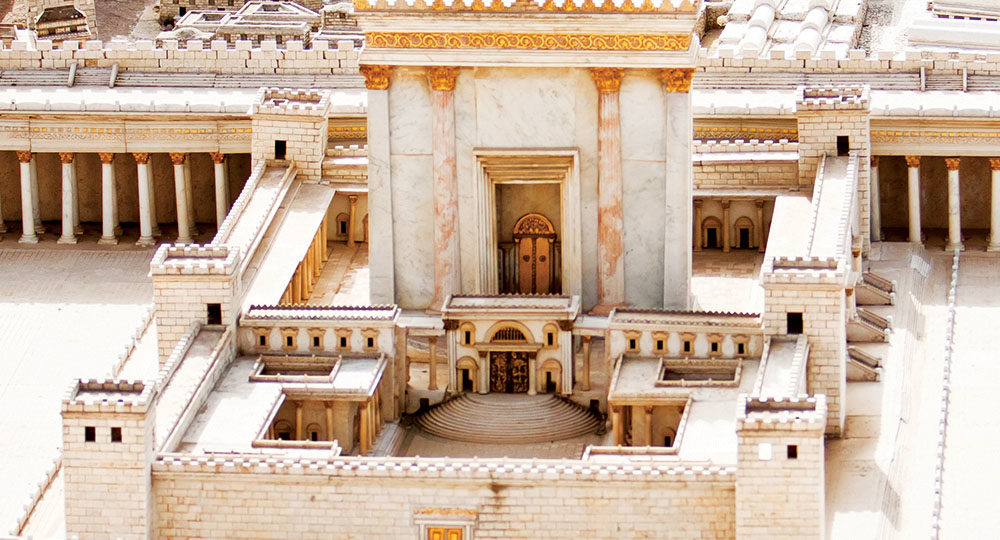
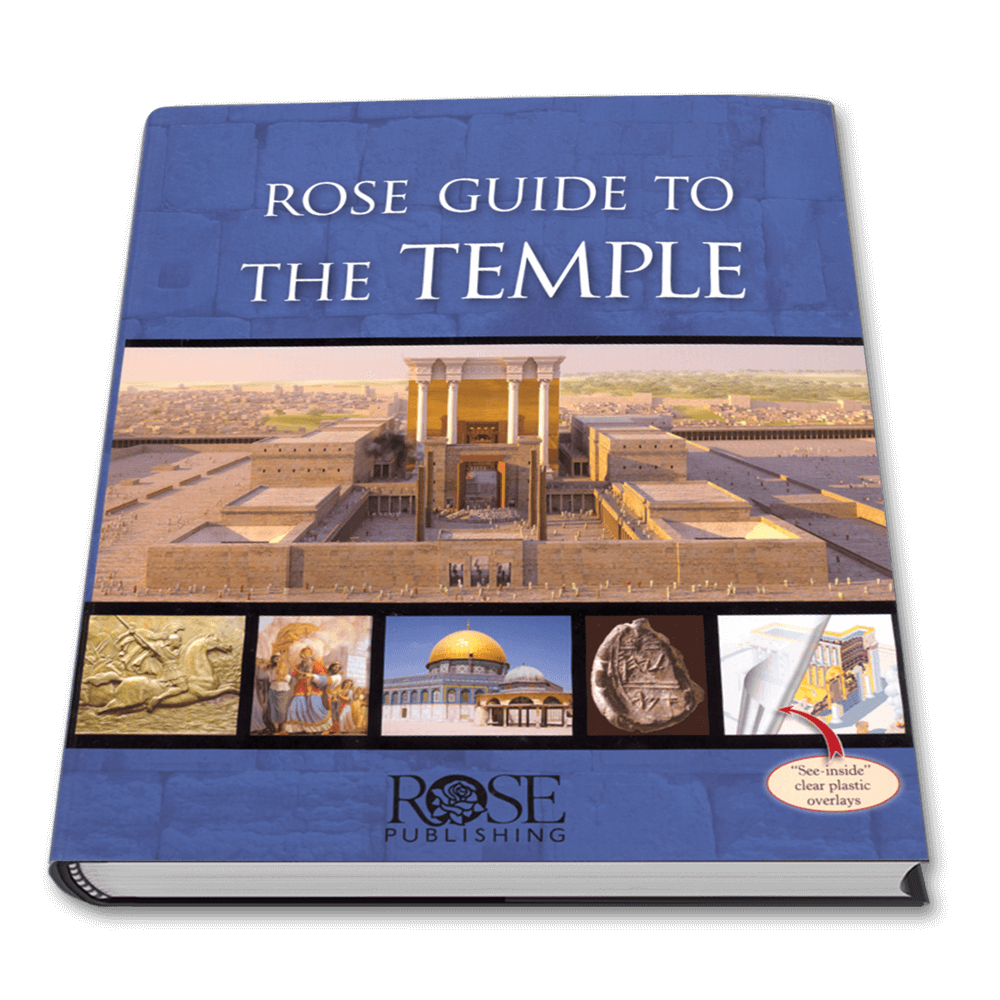

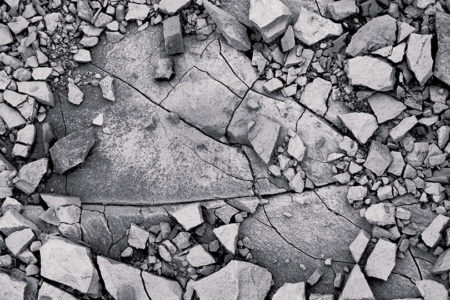
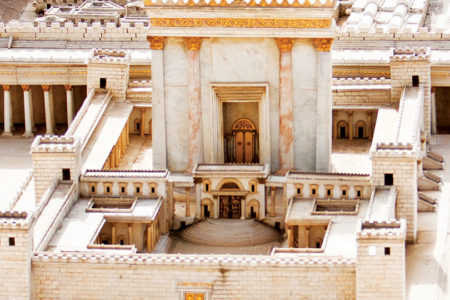
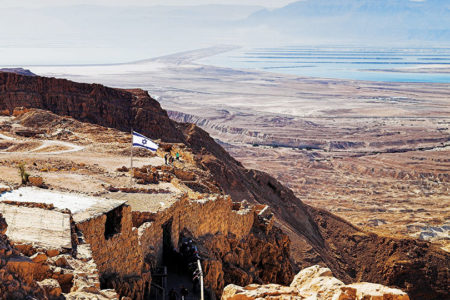
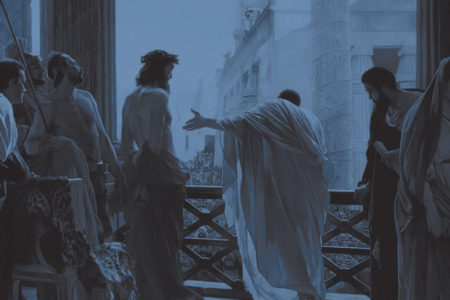


Please send me this info.
All so fascinating but the whole article is one sided Bob builds a very strong case which leads me in the direction of the City of David as the true location fascinating read though thank you enjoyed it
Hello Everyone,
This is fascinating reading. I never even knew there was a debate about the site of the temple. I do have a weird question though. Where was the Roman barracks or palace (depending on the translation version)? The reason I ask is that in Acts 21 when the people want to kill Paul they drag him out of the temple and shut the gates. Then when the Romans hear about the incident Acts records that the Romans ran “down” to the crowd. When Paul is arrested the Romans have carry him to the stairs (because of the angry crowd), and once on the stairs Paul speaks to the crowd. I have assumed that the stairs were going “up” from the temple as that would be a vantage point for speaking to a crowd. Where was this Roman barracks or palace located? Was it really higher than the temple (which would be a vantage point for the Romans and completely understandable militarily)? And if the barracks were higher than the temple, were they destroyed at one point? I have looked on the internet at photos of Jerusalem but I cannot see anything higher than the temple mount. Now I am very curious!!!! God Bless you all. Warm Regards.
My question is…. if the location of the temple is so vital to the redemption of the Jewish people, why would they allow (without a revolt like in the past) for the Muslims who were their enemy, why would the Jewish people allow the Muslims to take this most sacred place??? It would seem that if the temple was where the Dome is now, there would have been some evidence of resistance?
The Byzantines recognized the identity of the Haram esh-Sharif as the Roman camp, calling it the “praetorium” or “hall of Pilate” in several pilgrimage accounts. With the advent of the Crusaders, the Haram esh-Sharif became the site of Solomon’s temple, so ignorant were they of the existence of Herod’s temple. Their identification took hold and has continued ever since. The use of the term “Mount Moriah” began with Fetullus in the Crusader era, while Mount Zion, which had become lost, along with temple, was the true site of the temples. Please consult “The Byzantine Presence on the Temple Mount” on Academia.edu to read the accounts which reveal two Christian churches once stood on the Haram. There are also other papers on Academia which give multitudinous sources regarding the City of David site for the temple. Marilyn Sams (author of The Jerusalem Temple Mount Myth)
Just read 2nd Chronicles and accept it as truth. The Temple was on Mount Moriah.
And how do you know where mount moriah was? The jews lost the entire city of david until 150 years ago. They had no idea where anything was, let alone the temple, except perhaps fort antonio.
Dr Price, with respect you seem to be parroting the Ritmeyer conventional line which, in my view becomes more untenable by the day. Marilyn Sams in her book (‘The Jerusalem Temple Mount Myth’) is convincing and persuasive with many ancient references. In my own book ‘THE PLACE HaMakom; where Jerusalem’s Temples Stood’ my main contention is that there MUST be ‘living water’ at the site for it to meet God’s typological requirements. HaMakom was a name used by Abraham, Isaac, Jacob, Moses, Jeremiah and even John as The ancient nickname for the sacred site and the temple. IAN HEARD, Sydney, Australia http://www.until-we-see.com
Hi Ian,
You may have written a book about this. But if you lack the right direction you are sure to end up on the wrong side. Take a look at these examples before going into the temple location issue.
The Bible said that the world is round or a circle. Isaiah 40:22. But until Magellan’s journey people had their own fantasies. The Bible said that the earth is suspended on nothing or hangs in the air. Job 26:7. But scholars made their own theories. The Bible said that the life of flesh is in the blood. Leviticus 17:11. But medical world did not recognize this until the beginning of 20th century.
Every time when people formed their own theories against what is mentioned in the scriptures, we see the same result – people fail and scripture wins. Yet it is the nature of man to reinforce the quote of Georg Hegel – “We learn from history that we do not learn from history.”
You may give any number of ancient references and form your theory. But it has to align with the scriptures. The scripture is the ultimate test and your theory will win if you align with the scripture.
The source of the concept of “living waters” for the Temple is not scriptural. Nowhere in Bible we read so. We have sources as early as 4th century BC talking about the water channels that brought water to the Temple. The letter of Aristeas gives us solid proof that the aqueduct was fuly operational before 278 BC. This proves that the Hasmoneans or the Romans were not the first to build the aqueducts.
The concept of living waters was intoduced by Ernst Martin and no other ancient source tells so. There cannot be any other ancient literature supporting this because Solomon did not use living waters.
Now looking at the Bible and what it tells us about the Temple location. we get lot of clues. We can pretend to close our eyes and want to miss these clear landmarks if we want to. The first one is the threshing floor. All Biblical scholars agree on the boundaries of the city of David during David’s time. And not just the Bible, but history tells us that threshing floors are never inside a city. The Temple mount area was outside the city of David at the time of David and this threshing floor was located at the southern most end of what is known as Mount. Moriah. The Bible gives the 2nd clue with a verse in 2 Chronicles 3:1 that the Temple was built on Mount Moriah. God knew 2000 years later people like Ernst Martin and Bob Cornuke will come to confuse the people. So he kept this verse.
Thirdly, even a simple calculation of area will tell that the Temple will not fit into the narrow city of David. If you were to place the Temple there it will be jutting out into the valley of Kidron. It doesn’t simply fit. Next, there are no archaeological evidences that the Temple was in the city of David. The recent discovery of a garbage dump of the eastern slopes of the city of David destroys all the theory of placing the temple in the city of David. MAny more such discoveries will continue to come up because there is only one truth.
Fourthly, there is an elevation map that is clearly visible when we read the bible. David asked his son to be taken “down” to the Gihon spring for his coronation(1 Kings 1: 33). This tells us that David’s palace in the city of David was at a higher elevation than the gihon spring. When Solomon became king, he built a palace for himself. This was not present inside the city the David as it was already fully occupied and fully built. Therefore, Solomon built his palace in Ophel area. We have archaelogical discoveries supporting this. Now we read from 2 Chronicles 9:4 that Solomon used an ascent (stairway) to go “up” to the Temple of God. This also aligns well with 2 Chronicles 5:2 in which Solomon brings “up” the ark out of the city of David into the Temple of God to place it in its location. Where does all these clues lead us to? Clearly, we land up on the southern end of the Temple Mount.
Whatever Randell tells here aligns with the truth and it is your theory that is not aligning with the facts. In 1967, they discovered the Trumpeting stone mentioned by Josephus. It stayed put in its place where it fell in 70 AD. That was another proving point. The discovery of Akra in the Givati parking lot is another piece that fits in. We know during the Maccabean revolt there stood a tower/fort to the south of the Temple. Now they have discovered this Akra in the Givati parking. This also proves that the Temple stood north of this place.
You said,
“Therefore, Solomon built his palace in Ophel area. We have archaelogical
discoveries supporting this. Now we read from 2 Chronicles 9:4 that
Solomon used an ascent (stairway) to go “up” to the Temple of God. ”
2 Chron. 9:4 says:
“the food of his table, the seating of his officials, and the attendance of
his servants, and their clothing, his cupbearers, and their clothing, and
his burnt offerings that he offered at the house of the LORD, there was
no more breath in her.”
I don’t see anything mentioning “ascent (stairway) to go “up” to the Temple of God” in this verse. This doesn’t seem to address what you are saying. Are you sure you gave the correct verse reference ??
Be Well, DZ
Try here Douglas —-> https://biblehub.com/interlinear/2_chronicles/9-4.htm
Agreed! The Bible has proven to be absolutely true over and over. All remarks concerning the Temple in Scripture demand it be on mount Moriah. All the bits of evidence that men produce from other sources are pure conjecture. You can’t read 2nd Chronicles and come to any other conclusion. The Temple was on Mount Moriah. And when the third one is built in preparation for Jesus it will be there also. Just wait and see.🙏👍❤
There is absolutely zero proof that the trumpeting stone “stayed put”. Have you been standing guard over it for the last 2000 years? Or is it just bc you say so?
Dear Sir,
I would like to respond to your first (and best) argument that it seems absurd that the Jews could have lost their Temple. Perhaps they have, or perhaps not. In a nutshell,
1. The true Temple Mount, Ornan’s old threshing floor, may be seen at Ammunition Hill.
2. The true Old City and citadel, also long gone, once stood atop Mt Scopus, which is the only position of military advantage in the area.
3. The Well of Souls, now enclosed beneath the Dome of the Rock, is the tomb of Christ. The Wikipedia has some dandy photos of the space, which is about the size of your livingroom. The Haram is the work of Constantine, who built the platform (and the original Church of the Holy Sepulchre) to establish the Well as the Lord’s empty grave.
So, why do the Jews pray at the Wall? I suspect that it is because Constantine carted stone all the way down from the destroyed Temple at Ammunition Hill (a full mile north) to build his platform and his church. And what would have been more holy to the Jews, the physical location, or the consecrated rubble from the debacle of AD70?
If it is possible to have one’s cake and eat it, too, then the Jews are right, much more than the Mohammedans, in their claims to the spot. But the irony is inescapable, that they are all fighting over access to the family crypt of Joseph of Arimathea.
Great article. Unfortunately I bought his books, and was excited about the possibility of no longer needing to be built where the Dome of the Rock currently is. Big bummer.
I am not convinced it is for believers to enter into a search for the place God has chosen for the Temple past or future..but I would have to say I am far more persuaded by Robert Cornuke’s Argument than this pure rebuttal. We must go against the traditions of man to find the truth of any matter. As a woman I will not teach any matter of scripture to men of God, therefore rightly dividing the word of truth will always bring blessing.
Why would you not teach any matter of Scripture to men of God, you are a woman of God are you not?
The Holy of Holies must line up with the Eastern Gate. That means the temple can be rebuilt to the north of the Dome. The entire temple will not fit there because of the Dome, but that lines up with Scripture perfectly when the Bible indicates that the outer court must be left off. The area north of the Dome is where water channels run to provide water to the temple and it will be in line with the eastern gate. The Dome doesn’t have to be destroyed after all.